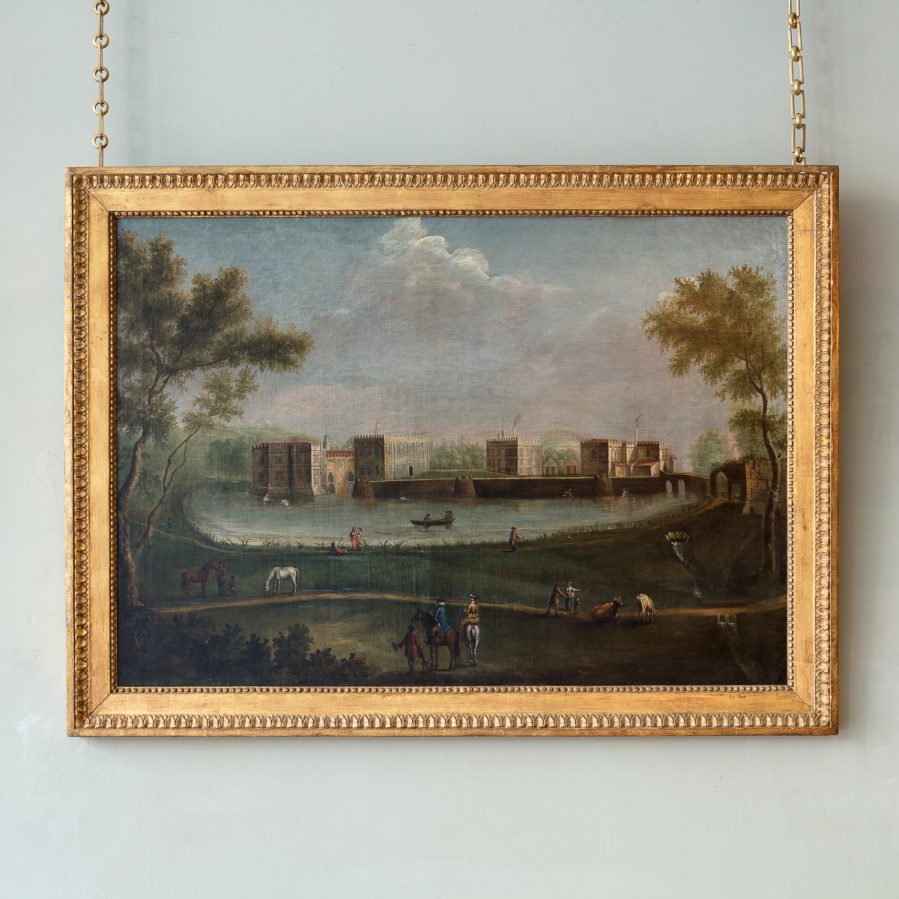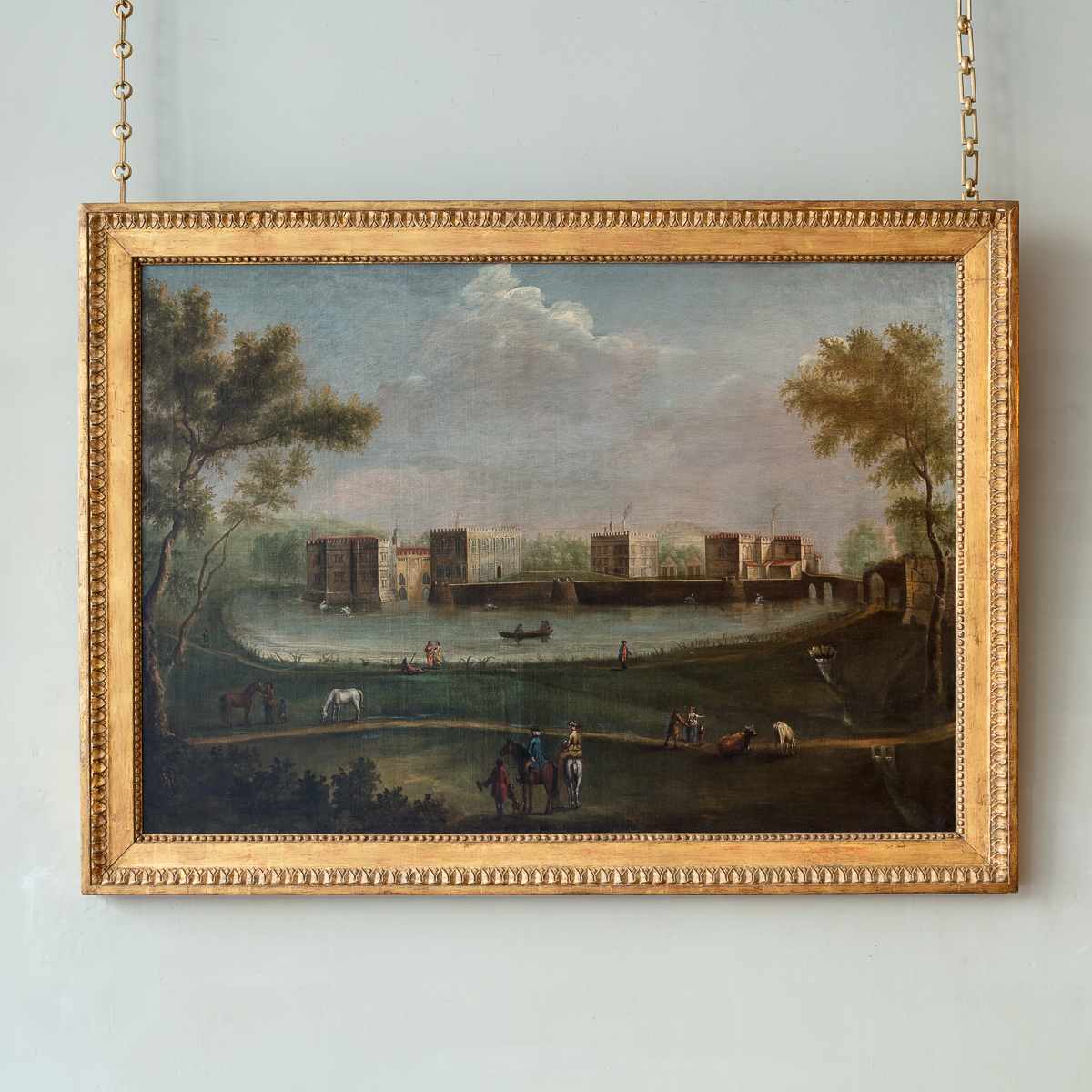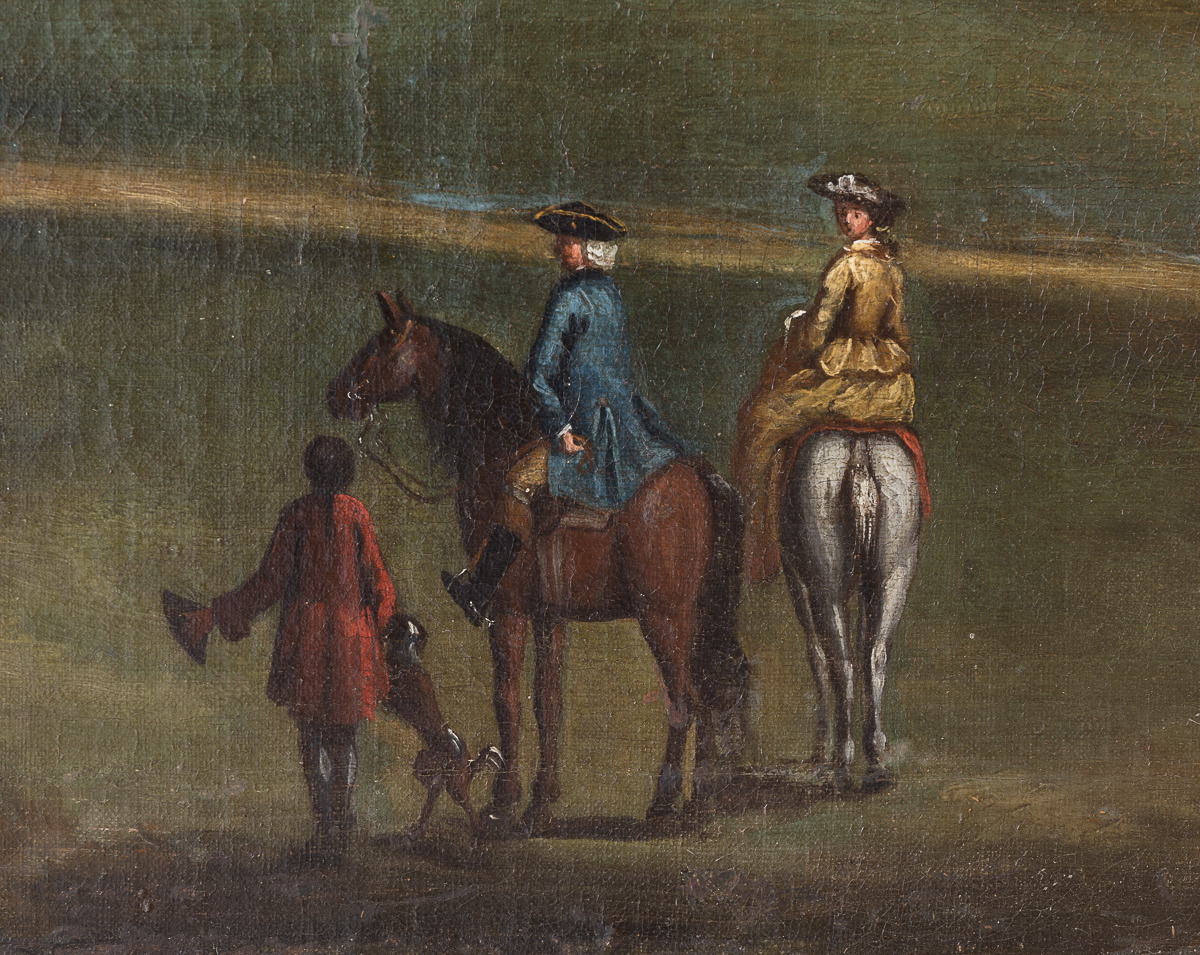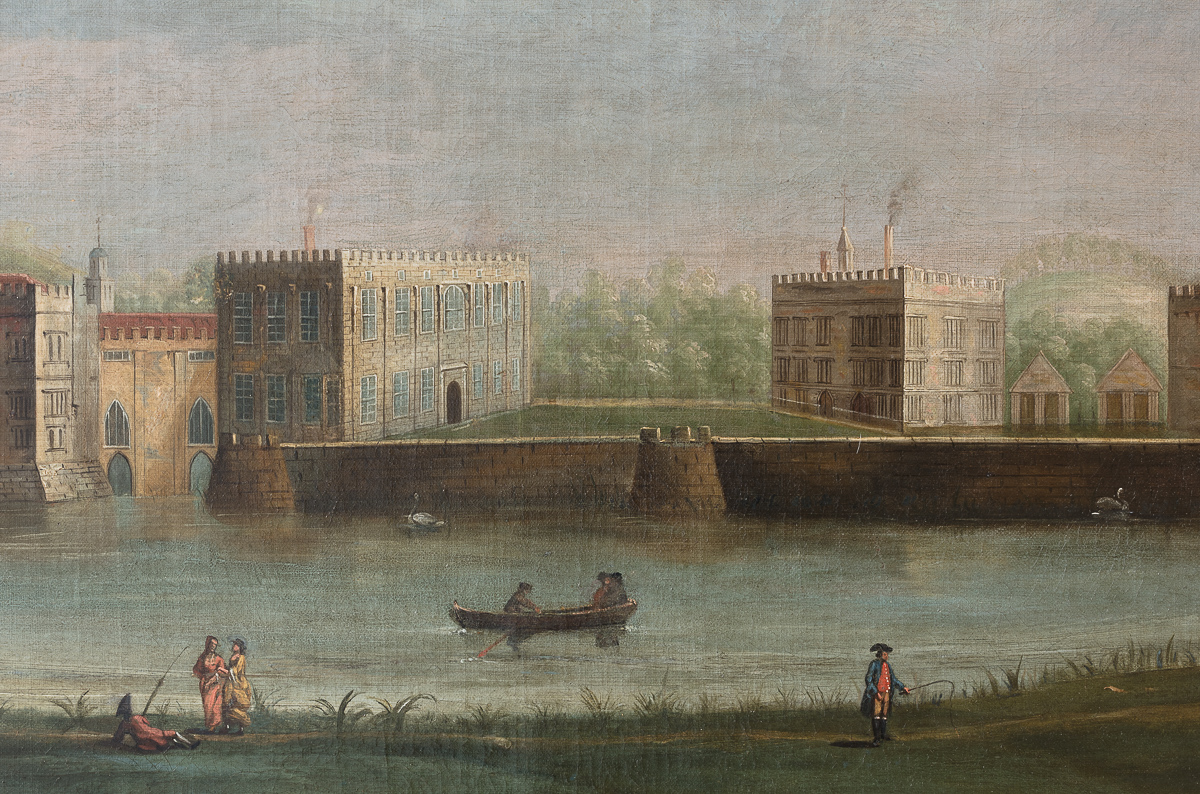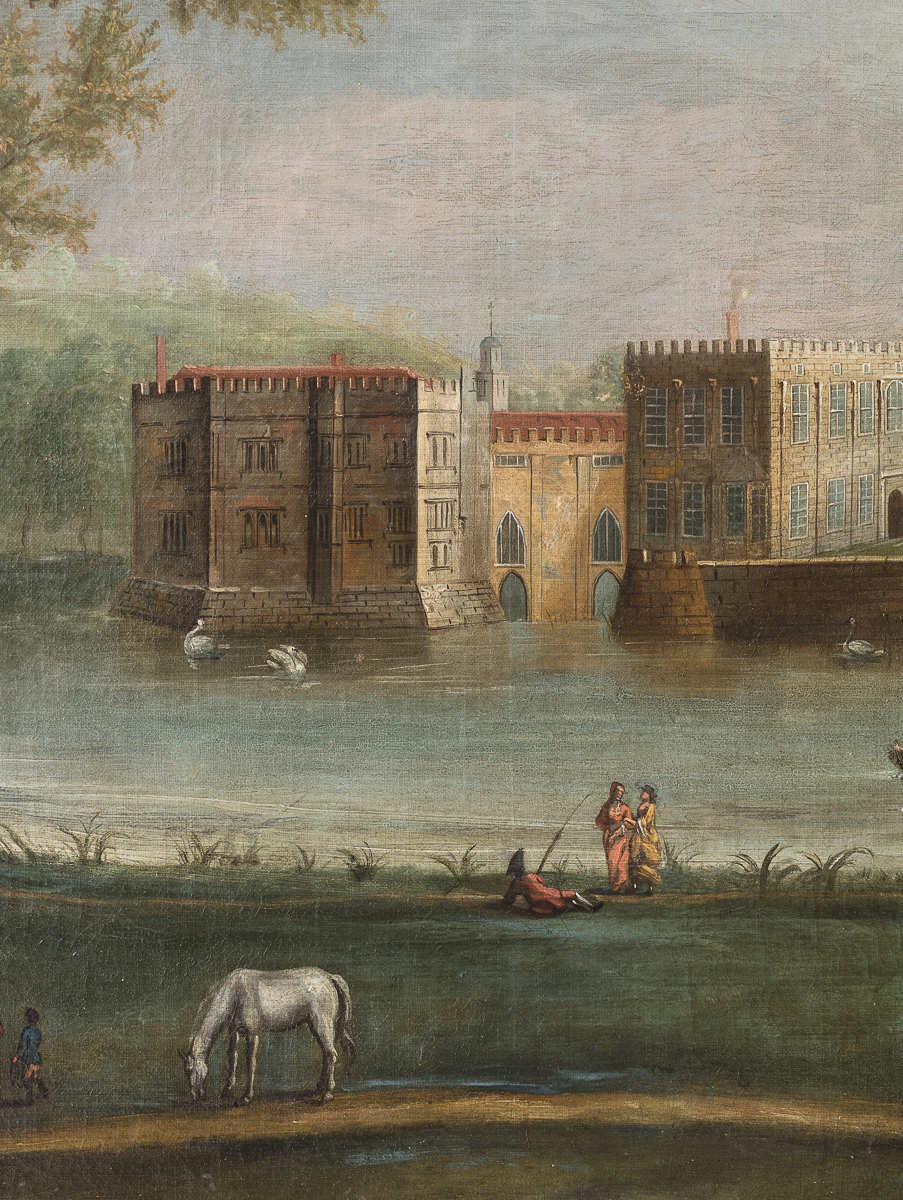Oil on Canvas; Mid-18th century British School, The West Prospect of Leeds Castle, Kent
This carefully observed view of Leeds Castle, enlivened by an array of figures and animals moving across its verdant grounds and medieval moat, is an important testimony of the building’s appearance after the renovations carried out by Sir Richard Smythe (1563-1628) at the beginning of the seventeenth century. Smythe, a wealthy tradesman and member of parliament, transformed the existing Tudor palace, once a residence of King Henry VIII, into a grand Jacobean country house that survived, much altered and damaged, until 1821, when it was inherited by Fiennes Wykeham Martin (1769-1840), who initiated a campaign of restoration that resulted in the so-called New Castle visible today, completed in 1823.
Originally, Leeds Castle – which draws its name from the old English word ‘Esledes’, meaning ‘slope’ or ‘hillside’- had been the site of a Saxon royal manor that came into the possession of Odo, Bishop of Bayeux and half-brother to William the Conqueror, after the Norman Conquest. Odo’s nephew, King William ‘Rufus’ II, granted the manor to his liege Hamo de Crevecoeur, whose descendant Robert de Crevecoeur built the first stone castle, taking advantage of the site’s naturally protected position on two islands within the River Len. In 1278, the Castle came into the ownership of King Edward I and his queen, Eleanor of Castille, which marked the start of a long period of royal tenure. With some interruptions and much intrigue, Leeds Castle remained a royal residence throughout the War of the Roses and the reign of King Henry VIII, who invested large sums of money in renovating and beautifying it.
As well as a cherished family heirloom, this view of Leeds Castle is the record of an important chapter in the eventful history of the manor. The eighteenth century was arguably the age of the English country house, when estates were embellished not just with lavish art collections, but also with landscaped gardens and rolling parkland, as mapped in the aforementioned 1748 survey (for a full illustration see Bryant, pp. 20-21). It is likely that after commissioning the survey, Robert Fairfax also wished to celebrate the appearance of his house and its grounds in a more decorative manner, namely a painting. At the time, it was customary for the aristocracy and landed gentry to commission such “portraits” of their estates, which would be hung in pride of place and sometimes disseminated in the form of prints.
Further literature, upon request.
Provenance
Olive, Lady Baillie (d. 1974), Leeds Castle, Kent
until transferred to the ownership of her daughter and son-in-law
Geoffrey Russell, 4th Baron Ampthill (d. 2011) and his wife, Lady Ampthill (d. 2001), The Maiden’s Tower, Leeds Castle, 1960 and by descent to
David Russell, 5th Baron Ampthill, Rye, Mountsfield House, East Sussex, 2002
Literature
Leeds Castle, foreword by Sir Arthur Bryant, London, 1994, p. 17, illustrated
Height: 93cm, 36 3/4″
Width: 126cm, 49 3/4″
£58,000


